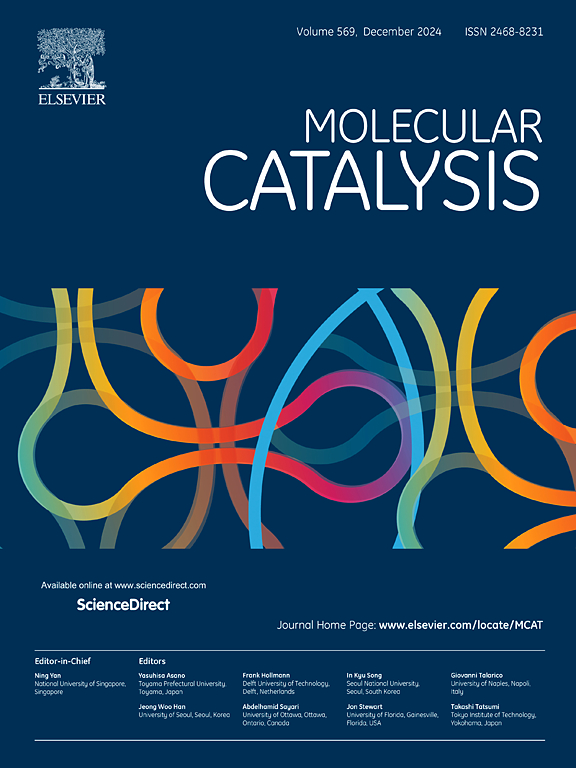A comparative study of CeO2 and Nb2O5-based supports for ethanol steam reforming (ESR) catalysts
IF 3.9
2区 化学
Q2 CHEMISTRY, PHYSICAL
引用次数: 0
Abstract
Ethanol steam reforming (ESR) over CeO2 and Nb2O5-based supports was studied in order to determine the role played by the support in the processs of hydrogen generation for fuel cells. Temperature of calcination as well as the presence of dopants influence the chemical and physical characteristics of the supports with impact in the product mixture distribution. The CeO2 support calcined at 800 °C and the Nb2O5-Na support calcined at 500 °C presented the best results in ESR, both in terms of acidity, conversion and selectivity. While CeO2 gives predominantly hydrogen and acetone, Nb2O5 produces mores ethylene. In the two cases, however, conversion is low ( %), so that the undesired products generated by the supports may not impact too much the product mixture under the presence of an active metallic phase. Density functional calculations (DFT) show that the preference for ethylene formation in Nb2O5 comes from the thermodynamic stability of the products, but not directly from acidic catalysis.

求助全文
约1分钟内获得全文
求助全文
来源期刊

Molecular Catalysis
Chemical Engineering-Process Chemistry and Technology
CiteScore
6.90
自引率
10.90%
发文量
700
审稿时长
40 days
期刊介绍:
Molecular Catalysis publishes full papers that are original, rigorous, and scholarly contributions examining the molecular and atomic aspects of catalytic activation and reaction mechanisms. The fields covered are:
Heterogeneous catalysis including immobilized molecular catalysts
Homogeneous catalysis including organocatalysis, organometallic catalysis and biocatalysis
Photo- and electrochemistry
Theoretical aspects of catalysis analyzed by computational methods
 求助内容:
求助内容: 应助结果提醒方式:
应助结果提醒方式:


